by bria4123 on October 12, 2012
Why a 2nd buffalo post? Do I have a really weird animal fetish?
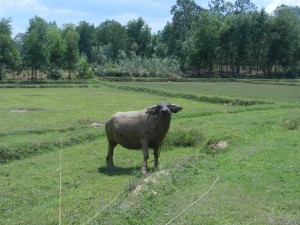
No, but I do greatly appreciate Southeast Asian cultures. And the more deeply you delve into a culture’s roots, the more you can enjoy it. So I’ll tell you a short story from Laos about creation. It shows how much humanity’s ancient relationship with this sturdy animal has influenced thought in one of the world’s most fascinating regions. [click to continue…]
by bria4123 on October 11, 2012
Sorry for the corny pun. The spirit of this post has gotten into me, and I felt like saying something old-hat.

And the relationship between person and buffalo is ancient in Southeast Asia and southern China–and very hallowed. This man in a village near Yangshuo, China, wanted to show me. He was swimming as I was savoring the countryside. The buffalo suddenly approached me very quickly. It was big and butt-ugly, so I backed off. The man got out of the water and came over to demonstrate that he’s friendly. He then asked me to pet him. The hairs on his head were as thick as an elephant’s, but he enjoyed the rubbing. I should have known that he just wanted some love. [click to continue…]
by bria4123 on October 11, 2012
A Laotian friend once told me that he wasn’t comfortable with Rush Limbaugh. What’s this got to do with the Mekong River? I’ve heard of the Mekong dolphin and the Mekong catfish, but not the Mekong whale.

My friend squirmed because Limbaugh always took a conservative stance, as though liberals are always wrong. He felt that there should be balance. For him, and for many Southeast Asians, the ideology means less than multiple ideas being in harmony. This highly civilized idea has roots in ancient experiences of living on the banks of the Mekong and other rivers in SE Asia. Come and explore its source. [click to continue…]
by bria4123 on October 10, 2012
The mighty Mekong captivates imaginations as much as any other river on the planet.
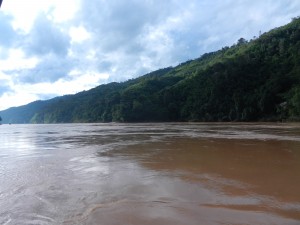
It captivated mine as I boated on it in Laos for 2 days. It seems both primal and spiritual, and it gave me insights about how many Southeast Asian societies developed their thought and art. [click to continue…]
by bria4123 on October 9, 2012
I guess I got sidetracked in the last post, but the monkeys in Asia can do that to you. But now we’re back to the otherworldly grace in Thai art.
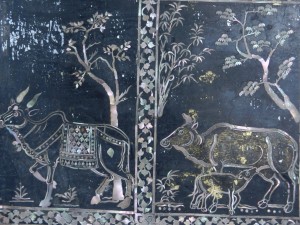
The animal kingdom is much more elegant in the Buddha’s footprint at Bangkok’s Wat Pho–no coke cans in sight here. Beasts are as luminous as the celestial beings in Part One. That’s the great thing about Thai art–it makes everything enchanting. The more you explore it, the more wondrous it becomes. [click to continue…]
by bria4123 on October 9, 2012
I rarely take monkey photos in Asia, but I couldn’t resist this one.
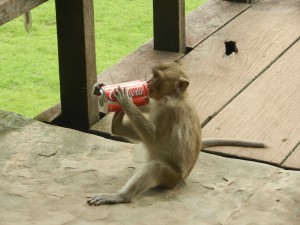
This little guy’s on the main terrace at Angkor Wat. The monument’s huge, so even our simean friends need an energy boost to keep exploring it. [click to continue…]
by bria4123 on October 9, 2012
Greek gods and Indian concepts of the universe’s vastness–I’ve gotten into humongous things in the last few posts. I need a break. Yeah, Wat Pho’s Buddha’s footprints are big too, but
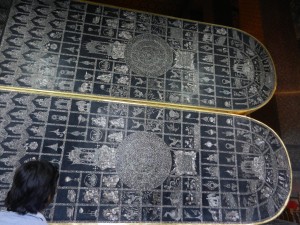
a closer look reveals some of the most elegant art anyone on the planet ever created. Thailand is a different culture than India, and it turned ideas from India into its own way of processing reality. Thai culture usually avoids monumental things and focuses on the human scale. But I find its creations as magnificent as anything the West, or India, or China ever made. [click to continue…]
by bria4123 on October 8, 2012
On the surface, the Vedic sky god Indra resembled Zeus. Both lived in a palace in the sky, threw thunderbolts around, and enjoyed their status as the most prestigious god.
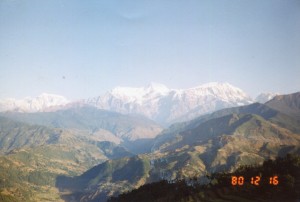
But from India’s earliest text, the Rg Veda, Indra had characteristics that suggest that ancient Indians thought in different ways than ancient Greeks did. [click to continue…]
by bria4123 on October 8, 2012
A teacher that I had in a class on Homer’s Iliad said that the ancient Greek gods, in their frequent quarrels, were a typical Mediterranean family: “Dishes flying”.
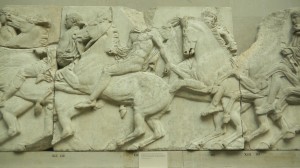
A student with Greek blood chuckled and said, “It’s true!” Maybe not exactly–I’ve experienced much more warmth and hospitality from Greek families than fireworks. But I do agree that ancient Greeks were unusual in their degree of seeing gods in terms that reflected worldly life.
About 1,000 years after the great Homeric texts were written, St. Augustine of Hippo wondered how anyone could have worshipped such contentious, lecherous, wine-swilling creatures. But Augustine was from a different time. Here, we’ll have a quick look at a glorious vision from the early Western tradition, which still shapes our thought. [click to continue…]
by bria4123 on October 7, 2012
This sure doesn’t look like yesterday’s pics of Greece–where’s our hallowed classical balance?

The Himalayas are so much higher than Mt. Olympus that Zeus would have frozen his gonads off. Cover up if you want to enter this post! [click to continue…]










